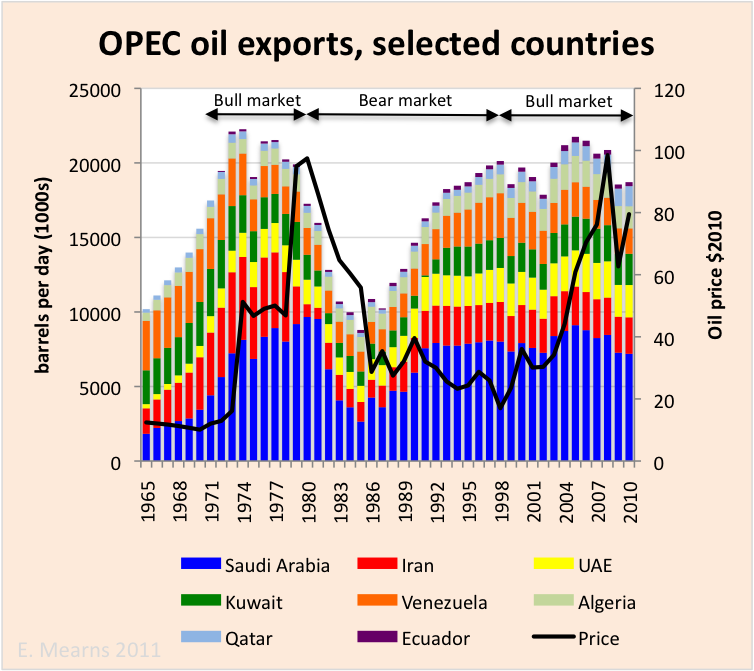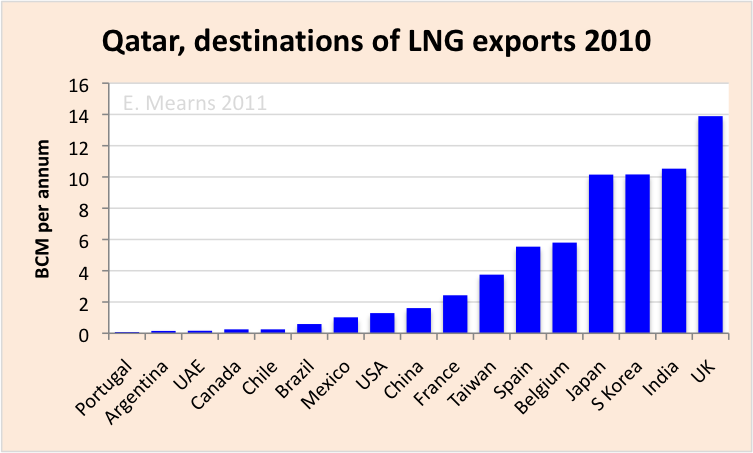In our last exciting episode, we saw barter, foreign coinage, fiat money, the rise of a banking system and systematic efforts to fiddle the system, by both banks and government. From one Turning to the next …
When the War Between the States ended, federal expenses had doubled, to $130 billion. The United States notes called the “greenback” arose from the Legal Tender Act of 1862, especially useful for all debts, public and private when there was already not enough specie to support the banking system.
The old state banking operations were supplanted by a system of banking entwined with the federal government. This new scheme led to the establishment of the Federal Reserve System.
First, of course, the government had assured the people that only $150 million greenbacks would be issued. Alas, they made two more issues, reaching a total of $415 million in 1864, all of which depreciated in real terms. Secretary Salmon P. Chase had tried unsuccessfully to manipulate the gold market to stem the depreciation along with other ‘tricks’. He ended up losing office.
Meanwhile, the state banks were still operational, and quite happy with the new fiat currency.
Needless to say, price inflation increased significantly. In the South, the Confederate fiat money issuance was far worse.
In 1865, Congress legislated a 10 percent tax on existing state banks notes. After that, the federal national banking system that had arisen had the legal monopoly on fiat money.
Much argument about the large public debt which existed after the war, and what to do about it and the greenback question. A federal debt of about $65 million in 1860 had blown out to $2.3 billion in 1866. The greenback issue was finally ruled unconstitutional in 1870 by Chief Justice Salmon P. Chase. Yes, he was for it before he was against it. Chase had become a born-again sound money supporter.
The Republicans of the day loved the legal tender laws; Democrats supported specie resumption. The railroads weren’t happy at the thought of paying their massive debts in gold. President Grant had two vacancies on the Supreme Court – and judiciously filled them with a pair of railroad lawyers. A 5-4 revisit to The Law in 1871 established paper money in accordance with the Constitution. All the banks, state and national, were happy, too, and the money supply more than doubled in seven years.
The Panic of 1873
Easy money led to easy loan, to individuals and companies. When the growth levelled off after their period of prosperity, the money supply did not decrease, nor productivity. Prices fell because costs were down and output up.
So where, really, was the panic? Yes, with a bloated banking system and railroads fat with subsidies from the federal government and the inevitable boom time speculation. Then Jay Cooke’s Northern Pacific railroad crashed and burned – hoist on his own petard of inflationary policy.
The U.S. Mint ratios, as determined by the Constitution, undervalued silver. As a result, silver coinage left for better climes where the value was respected. That’s the flaw of a bimetallic system. Also, European countries were shifting from silver to a gold standard. Add the discovery of silver mines in the American West and a government intervention.
February 1873, Congress passed a bill discontinuing further minting of silver dollars. Further legislation in June, 1874, demonetized silver for good. The GSR reached 18-1 in 1876 and was 32-1 on 1894!
The lack of transparency regarding silver had not been unnoticed by those who called for the free coinage of silver at the traditionally accepted ratio, and in unlimited quantities. This faction carried on throughout the century. Really, this movement was essentially the people vs. eastern bankers …
In 1875, the ubiquitous greenbacks still circulated, albeit discounted by 17% against gold. Grant’s administration determined to resume specie resumption in 1879. The next decade experienced great productivity, gold flowed into the country, prices were still edging downward, yet wages were up by 23 percent. Goodbye greenbacks.
Even the great Panic of 1873 had GDP growth of 6.8 perent a year. Prices going down is a signal for some economists to shriek “deflation”. Ordinary people hardly noticed; maybe the main deflation was that of fatcats whose greed brought them down.
(1877 – The Department of the Treasury’s Bureau of Engraving and Printing started printing all U.S. currency, A year later, they issued Silver Certificates in exchange for silver dollars. The last issue was in the Series of 1957. )
The Gold Standard Era, 1879 –1913
The NBER identifies a Long Depression from October 1873 to March 1879. At 65 months, this was a bigger record than the Great Depression of the 20th Century, which contraction was 43 months.
Some economists see price deflation over a long span and interpret that as the Great Depression of 1873 – 1896. While this period was most noticeable in Great Britain, in the U.S. after the inevitable correction to the panic, Main Street nor farmers hardly noticed any problem.
Productivity through 1897 continued to grow at 3.7% each year, average. Prices crept downward one percent a year. The change in money supply made the difference. A small panic hit in 1884 due to a minor contraction in the money supply.
Foreigners noted the increase of silver reserves at the Treasury and wondered if the U.S. would stay on the gold standard. The domestic agenda actually had to do with favors to the pro-silver bugs, including the western miners.
This was a tremendous period of growth – real wages climbing, prices declining slightly, savings up, inflation modest. High employment, significant investment activity, and continued rise in productivity created a period seldom equalled in American history. In real terms.
Like some say, no good deeds go unpunished.
The Devils in the Details
In the real world, one cannot separate politics and economy – it’s a symbiosis. Only academics can do this, as though it is meaningful. Back before Lincoln’s War, we saw the Whig Party implode, and Lincoln seeking his destiny with the new Republican party.
He did say, however, “I will always be a Whig in politics” which meant following his idol, Henry Clay, with internal improvements, high protectionism by tariff, a strong central government, and a national bank predicated on inflationary money policy.
In other words, mercantilism, cronyism, central control. And regionalism. For decades, tariffs had been based on the bulk of the costs borne by the South and the expenditures by the federal government primarily in the North.
The new Republican party in 1854 grew from a coalition of Whigs in disarray, “Free Democrats”, the Liberty Party, “Free Soilers” and abolitionist Democrats. Everybody had an agenda and none of it amounted to “the party of limited government” and the rest of the hype.
After Andrew Johnson’s one term, there were Republican administrations: Grant, Hayes, Garfield, Arthur – and in 1885, the first term of Democrat Grover Cleveland.
The Republicans’ nomination of James G. Blaine of Maine, former Speaker of the House, for president dissatisfied many partisans who considered Blaine as immoral. Democrats seized the day by nominating Cleveland, whose reputation of opposing corruption in government appealed to voters generally.
Cleveland’s first term was marked by significant government reform. He repudiated the ‘spoils system’ in which an incoming president appointed party cronies and turfed out the opposition. Cleveland said Republicans doing their jobs well would not be fired, merit ruled. He also diminished government departments staffed by chair warmers. Even worse, from some points of view, he attacked railroad robber barons who had not extended rail lines in accordance with agreement – those land grants were forfeit.
Cleveland was also the master of the presidential veto.
He also believed in a gold standard as opposed to bimetallism, which won him more enemies of the silver persuasion. And he also advocated tariff reform, as the beloved Republican high tariffs had actually created a government surplus. The Republic Senate, however, defeated the reform bill. The tariff question became a significant issue in the 1888 election.
Republican candidate Benjamin Harrison won two swing states, narrowly defeating Cleveland yet slightly behind the national popular vote – another victory for the Electoral College.
The advocates for free silver resurrected. The Sherman Silver Purchase Act of 1890 required the Treasury to buy 4.5 million ouces of silver each month. To pay for this increase in reserves, wait for it … a new issue of greenbacks although these were redeemable, with Treasury deciding whether gold or silver would be used.
1890 – Inflation is good!
Harrison, of course, had supported the Sherman Silver Purchase Act of 1890. Add the McKinley Tariff Act of 1890 and the supporters of high tariffs and an inflationary policy were happy.
Also, in August of that year, the New York Subtreasury used old greenbacks and the new greenback (silver) Treasury Notes. The result was paper replacing gold for settling customs charges. Cause and effect thus yielded gold outflows to foreigners, decreased imports, and growth declined.
Interventions beget interventions.
With foreigners already concerned about the U.S. honoring the gold standard, the Treasury imposed a fee on exported gold bars. As a result, all gold leaving the country was by American gold coin! Then the Senate put the cat among the pigeons in 1892 by passing a free-silver coinage bill.
Inevitably, gold exports increased. The gold-backed dollar was untrusted.
Banks submitted $6 million in Treasury notes for redemption. Treasury, worried about their declining gold reserves, implored the banks to exchange the gold for paper.
But as imported goods became more expensive, formerly Republican voters, particularly in the western states, opted for the new Populist Party. The election of 1892 was a curious and quiet affair: Harrison’s wife was dying of tuberculosis and he elected not to actively campaign. Cleveland followed in deference.
Nonetheless, much activity by the free silver factions opposing the Republican agenda, and others, led to a strong victory for Cleveland’s second term, with a significant margin in both electroal and popular vote.
He was inaugurated during this period of uncertainty and money crisis. In May 1893, the stock market collapsed. And in June, a run on the banks caused failures across the land. Many remaining banks suspended specie payment with government permission. The full-blown Panic of 1893 rocked the country. The total money supply diminished over 6 percent.
Cleveland, a sound money advocate, strongarmed the repeal of the Sherman Silver Purchase Act in November.
The gold-standard was reaffirmed.
Even so, silver advocates continued to press their case in 1895. The Treasury actively bought gold from a cartel of banks, including J.P. Morgan, and reassured everyone that gold was king.
Meanwhile, the fight against the McKinley Tariff continued. A revision bill passed the House with a large margin, after much debate. The Republican Senate, however, felt compelled to add over 600 amendments, all protectionism for cronies. The tariff, especially on raw materials was decreased, but to make up the revenue shortfall, a compromise income tax of 2% on earnings over $4,000 was added. Cleveland was not wholly satisfied with the reform but let the bill become law without his signature.
Gold and Party Politics in 1896
The once-and-forever two-party political system as we know it simply did not exist in the 19th Century.
As mentioned earlier, the Whig party effectively shot itself in the foot. Whigs became new Republicans. Four political parties contested the 1860 election. After the unCivil War, several special interests coalesced: farmers wanting lower railroad freight charges and higher crop prices, silver miners and silver bugs, prohibitionists and factions for certain populist changes to the system.
A People’s Party began in the Utah Territory in 1870 and expired in 1891. More concerned with local issues, they purported to represent the majority of Utah residents; supporting women’s suffrage helped the party. The dissolution of the party as such was an aid to gaining statehood in 1896.
The People’s Party of 1887 – 1908 is more commonly know as “the Populists” and became formally organized in 1893 with the adoption of the “Omaha Platform.” This resolution included:
- free silver (and bimetallism!)
- a graduated income tax
- direct election of senators
- public ownership of railroads and communication
- women’s suffrage
- eight-hour work day
- restricted immigration
Everyone knows the phrase “the man behind the curtain” and the metaphor gets wide use in our time. L. Frank Baum’s 1900 “The Wonderful Wizard of Oz” may well contain political imagery, though it is unclear if Baum himself intended this or if later commentary reads the story as allegory.
Most people in our time are probably more familiar with the movie version. Perhaps a significant clue, Dorothy’s silver shoes in Baum’s story became ruby slippers, courtesy of Technicolor.
The movie departs from the story significantly, as Baum wrote Oz as a real place, not a dream. Another clue might be that a later Baum Oz book mentioned Aunt Em and being unable to pay the mortgage on the new house which replaced the carried-away one.
If the symbolism was intended, then the characters represent:
- Dorothy – the American people
- Scarecrow – western farmers (backbone of Populist movement)
- Tin Woodman – industrial workers
- Cowardly Lion – William Jennings Bryan (lost elections)
- Wicked Witch of the East – eastern banking interests
- Yellow Brick Road – gold leads to Washington, DC
- Oz – abbreviation of ounce (gold or silver?)
- the Wizard – possibly William McKinley
Baum supported women’s suffrage, and had known a Populist advocate who later was an elected People’s Party senator.
The Panic of 1893
Haven’t we seen this movie before?
Well, yes, we did skim it above – but 1893 is a reprise of 1873. The usual suspects: Treasury mistakes undermining the greenback, their gold reserves declining, railroad speculation, national and state banks suspended specie payments. McKinley’s Tariff of 1890 contributed rising import prices and gold outflow from the U.S.
The Philadelphia and Reading Railroad went bankrupt ten days before Grover Cleveland’s second inauguration. Then, the National Cordage Company went into receivership – it had been the most active stock on the exchange. Several other railroads went bankrupt. The stock market crashed completely. Unemployed soared to near 20%.
Distrust of the banking system caused runs on banks all across the country. The money supply diminished over 6% in less than a year.
By November, Cleveland had killed the silver purchase act, the Treasury acted to restore confidence in the gold standard, and the panic was over.
But there was yet no joy on Main Street Unemployment remained high. Ohio congressman Jacob Coxey led a “petition in boots” march from Massillon in March, 1894. Coxey’s Army of over 500 reached Washington, DC and were arrested – don’t walk on the grass at the Capitol!
Another faction out west had commandeered a Northern Pacific train, avoided detainment by Federal marshalls as they headed east. They were stopped most of the way across Montana, at Forsyth, by the army. This action foreshadowed the military breaking the Pullman Strike later in the year.
The Populist movement thought they had a win by getting Lincoln’s income tax resurrected. “Curse you, robber barons,” they might have said. But the Supreme Court had the last word in 1895 and struck down the measure.
Needless to say, with Republicans and Democrats blaming each other for everything, the 1894 election was a bloodbath for Democrats. And the Populist movement was marginalized and thus had to support the Bryanite Democrats in the 1896 election.
The election of 1896
It was a year that the political party system in the U.S. changed for the fourth time. For the Populists, every cloud had a silver lining and William Jennings Bryan was one.
This election was about money in more than one way: bimetallism and free silver, the gold standard, the tariff – and who could spend the most.
1896 truly ushered in modern campaigning. Republican campaign manager Mark Hanna commanded $3.5 million, easy when your candidate, McKinley represents the moneyed classes. Bryan appealed to the Rocky Mountain states, rural Midwest, and the South.
And so much for the two-party myth: there were nominations from the Democrats, National Democratic Party (pro-gold), the Populist Party, the Socialist Labor party, and the Prohibition Party and the Silver Party of Nevada.
Bryan appeared to be an outside chance at the nominating convention of the Democratic party but had the final word on the third day of the debate: his “Cross of Gold” speech turned the tide. Having begun with humility, and illustrated the equivalence of all walks of life as kinds of business; praised bimetallism, invoked an early ‘trickle-down’ concept as a bad idea, and finished with the killer quote:
“Having behind us the producing masses of this nation and the world, supported by the commercial interests, the laboring interests, and the toilers everywhere, we will answer their demand for a gold standard by saying to them: You shall not press down upon the brow of labor this crown of thorns; you shall not crucify mankind upon a cross of gold.”
He walked back to his chair, in silence, thinking he had failed. Only then, the crowd exploded in praise, a frenzy that took nearly a half hour to quell.
It took five ballots the next day but Bryan carried that day.
Alas, his rhetoric did not carry the election. This key aspect of the Democratic platform more than anything:
We demand the free and unlimited coinage of both silver and gold at the present legal ratio of 16 to 1 without waiting for the aid or consent of any other nation. We demand that the standard silver dollar shall be a full legal tender, equally with gold, for all debts, public and private, and we favor such legislation as will prevent for the future the demonitization of any kind of legal tender by private contract.
killed Democratic aspirations and McKinley reigned. The free silver enthusiasts built a castle of dreams and good intentions, failing to understand that they could not impose their GSR on the rest of the world.
The real outcome of 1896 was the death of any support for the quaint Democratic party belief in small government, sound money, and laissez-fare ‘mind your own business’ attitudes. The wowsers won and the drive for Prohibition would not go away.
Old-time Democrats had voted Republican for the first time in their lives.
The McKinley campaign also succeeded because “those men behind the curtain” were the Morgan and Rockefeller banking groups; $3.5 million war chest had to come from somewhere! One of the stipulations for McKinley was to agree to support the gold standard.
The Populists were down but not out. Another Reform movement began, to solve the problems they perceived in monetary police and their dislike of the gold standard. A grassroots currency reform in the Midwest was suggested in a letter to the Indianapolis Board of Trade – by Mark Hanna, businessman, political manager and also friend of President McKinley, and U.S. Senator from Ohio from 1897 to 1904.
The Indianapolis Monetary Convention began in 1897 with representatives from 26 states and the District of Columbia. The Yale Review noted it was an assembly of “businessmen in general” and not “bankers in particular”.
One of their resolutions suggested a new and improved system of elastic bank credit. Do you see where this is heading?
Meanwhile, the economy had recovered in 1897 and the Progressive Era would soon remake the society.
*
Money in America, Part One « The Burning Platform































